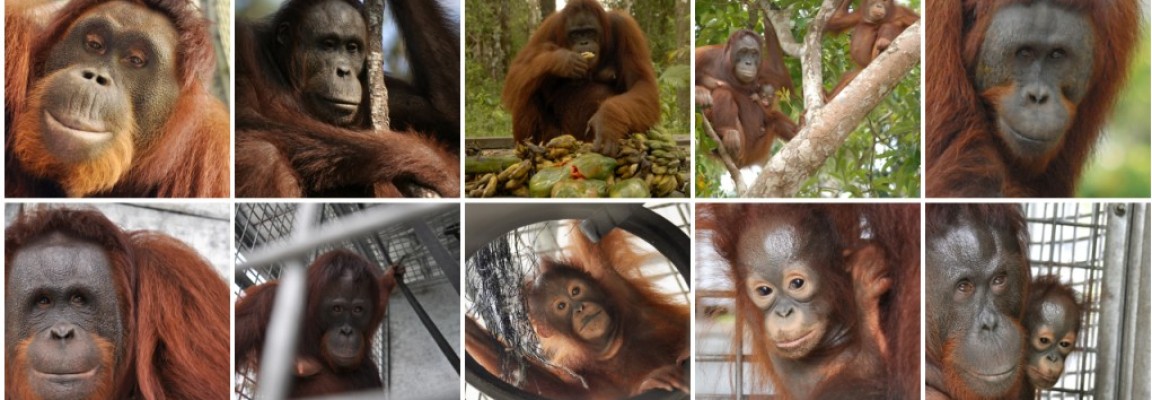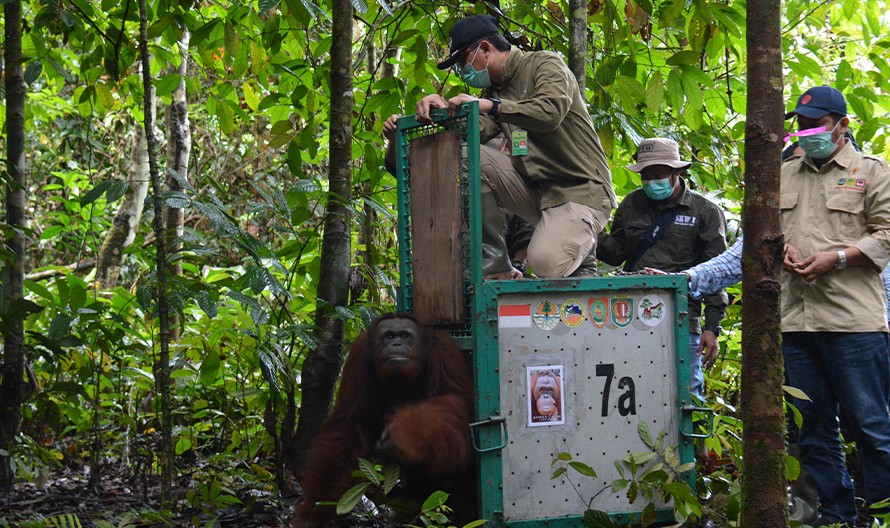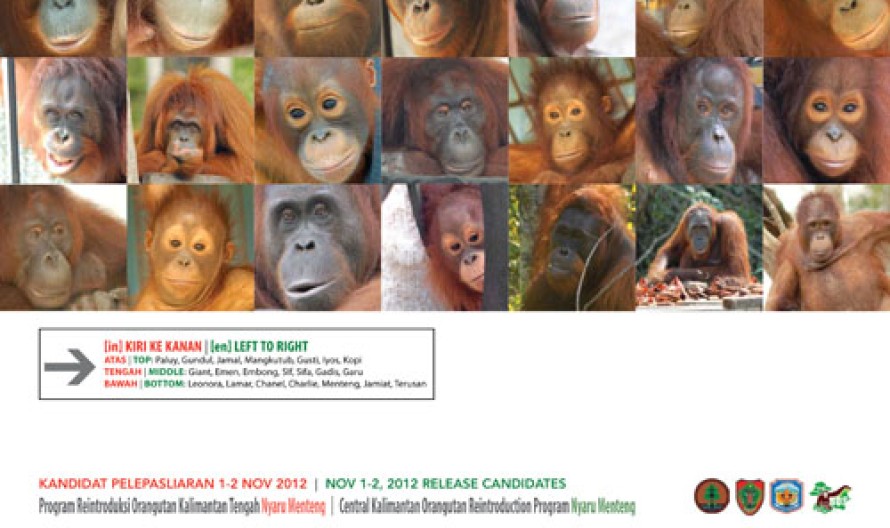As a part of the 7th orangutan reintroduction event from the Borneo Orangutan Survival (BOS) Foundation program in Nyaru Menteng, Central Kalimantan a mother-infant orangutan unit and one further individual are released in the BOS Foundation/RHOI Kehje Sewen Forest, East Kalimantan. Along with this release event, five orangutans from the BOS Foundation orangutan program at Samboja Lestari in East Kalimantan are being translocated to Nyaru Menteng.
These five orangutans who are of sub-species Pongo pygmaeus wurmbii will undertake the last stage of rehabilitation process on one the pre-release islands which are managed by the BOS Foundation in Nyaru Menteng before finally being released into their natural habitat in Central Kalimantan.
Balikpapan, East Kalimantan, 1 December 2013. A mother and her infant, and one other individual are released into the BOS Foundation / RHOI Ecosystem Restoration Concession, Kehje Sewen forest in Kutai Timur and Kutai Kartanegara Regencies, East Kalimantan. This orangutan reintroduction is an exceptional release event given it encompasses the first cross-province orangutan reintroductions from the BOS Foundation Central Kalimantan Orangutan Reintroduction Program at Nyaru Menteng to the BOSF / RHOI Ecosystem Restoration Concession, Kehje Sewen forest in Kutai Timur and Kutai Kertanegara Regency, East Kalimantan. Despite having been rehabilitated over many years at our Orangutan Rehabilitation Center, Nyaru Menteng in Central Kalimantan, Yayang and Sayang and Diah are released in East Kalimantan.
Mother-infant pair, Yayang and Sayang will be released in East Kalimantan following obligatory DNA testing procedures prior to any orangutan reintroduction. The test results revealed that Yayang belongs to the sub-species Pongo pygmaeus morio which naturally inhabits the eastern part of Kalimantan. In compliance with welfare practices, Yayang’s dependant infant, Sayang, will be released with her mother to ensure her welfare.
Diah, a 17 year old orangutan is released in East Kalimantan because her sub-species is also Pongo pygmaeus morio which naturally inhabits the eastern part of Kalimantan. Confiscated from Sebulu, East Kalimantan, Diah underwent the first part of her rehabilitation process in the BOS Foundation Reintroduction Centre, Samboja Lestari - East Kalimantan. However, Samboja Lestari experienced over capacity issues following a massive influx of rescued orangutans due to large deliberate forest fire set in 1998. Diah, who had only been in Samboja Lestari for one year had to be translocated to the newly established Nyaru Menteng in Central Kalimantan.
Thus following the standard national and international guidelines from the International Union for Conservation of Nature (IUCN), Yayang, Sayang, and Diah will be released into the Kehje Sewen Forest, East Kalimantan, instead of the Bukit Batikap Conservation Forest, Central Kalimantan like other rehabilitated orangutans from Nyaru Menteng. The Kehje Sewen Forest is an Ecosystem Restoration Concession (ERC) managed by PT Restorasi Habitat Orangutan Indonesia (RHOI), a company that was established by the BOS Foundation on April 21, 2009, solely to acquire the right to use and manage a forest which was desperately needed to release rehabilitated orangutans from the BOS Foundation Orangutan Reintroduction Center at Samboja Lestari.
This release event involves the collaboration of all the stakeholders, including the Central and East Kalimantan Provincial Governments, Kutai Timur and Kutai Kartanegara Regencies Government, Central and East Kalimantan Conservation and Natural Resources Authority, and the whole community of Kutai Timur and Kutai Kartanegara.
The BOS Foundation strives to meet the targets of the Indonesian Orangutan Action Plan and Conservation Strategy 2007-2017. The Action Plan was launched by the President of the Republic of Indonesia during the Climate Change Conference in Bali, 2007. It states that all eligible orangutans currently in rehabilitation centers should be released by 2015, and it has been endorsed by all levels of government, including the provincial and regency levels.






